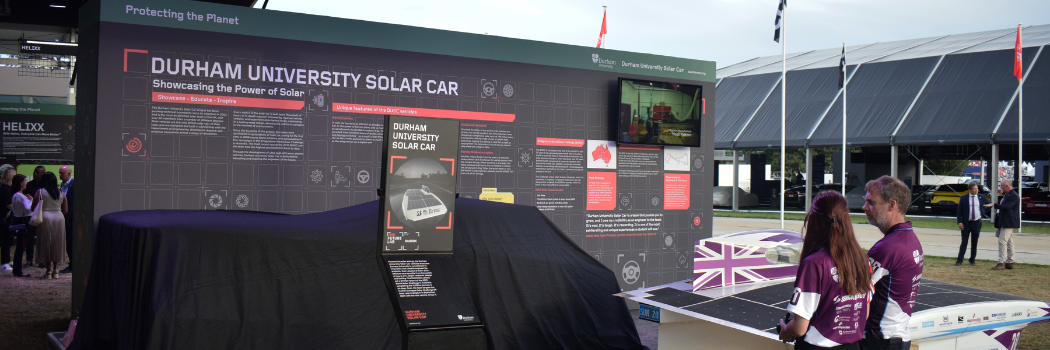
Our Solar Car team has successfully conquered the legendary Goodwood Hill Climb, marking a significant milestone in the evolution of sustainable motorsport.
Goodwood hill climb
'DUSC2023' – the solar car designed and built by our students, completed the Goodwood Hill Climb alongside Formula 1 cars and luxury hyper cars.
The Solar Car, which previously crossed Australia coast-to-coast using only solar power, tackled the Goodwood Hill Climb's steep gradient - twice as challenging as any incline faced during its Australian journey.
This feat demonstrates the car's impressive capabilities and the team's engineering prowess.
How the car works?
The Solar Car built by our students is very special. It uses panels on its roof to catch sunlight and turn it into power for the motor.
The car is also very light and shaped to cut through the air easily. This helps it use less energy to move.
In fact, the car is so good at saving energy that it can drive on a highway using less power than a hair dryer.
New racing car revealed
The team didn't just bring one car to the event. They also showed off a brand-new solar car they've built for racing. This new car, called Ortus-T, is designed to race for 24 hours without stopping.
The students will take this new car to a big race in Belgium later this year. They'll compete against other solar cars from around the world.
At the event, the team also got to show their car to thousands of people. They set up a display where visitors could learn about how solar cars work and why they're important for the future.
Solar cars are important because they don't use any petrol or diesel. This means they don't create pollution when they run. As the world looks for ways to stop climate change, inventions like these could help a lot.






